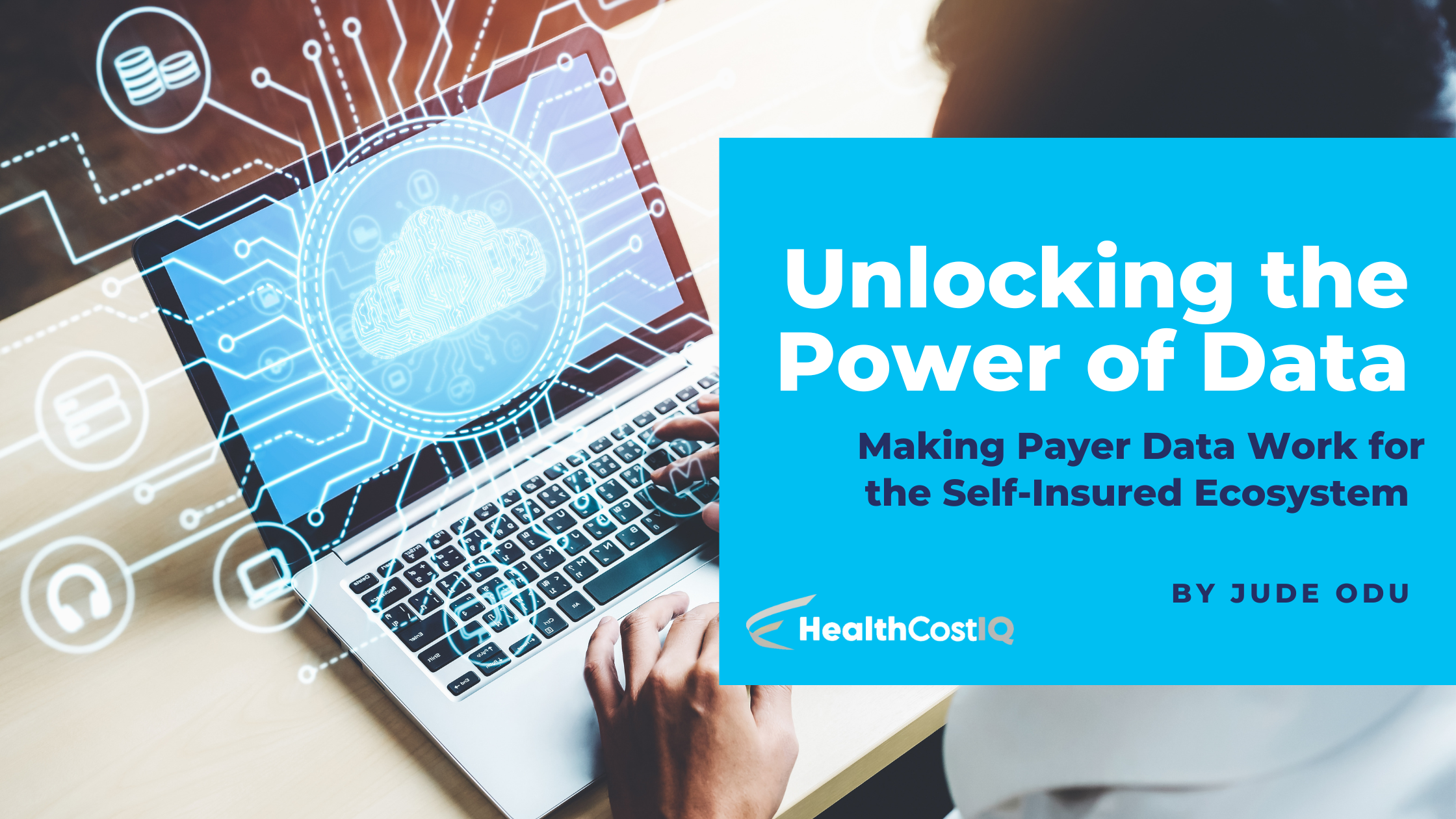
Making Payer Data Work for the Self-Insured Ecosystem
Thanks to recent federal legislation, healthcare data has become more accessible to U.S. employers and patients than ever before. The Hospital Price Transparency rule, established in 2020 and effective in 2021, requires hospitals to disclose service pricing. Further legislation has prohibited gag clauses, mandated prescription drug price sharing, and required that payer and provider-negotiated rates be made available. These measures are intended to support employers involved in health plan management and ultimately lead to more affordable, higher-quality care for employees. However, as Aesop’s fable warns, "too much of a good thing" can be overwhelming. Self-funded employers and their plan participants now face a flood of information, leaving them uncertain about using this new data effectively.
The good news is that many companies, including Health Cost IQ (HCIQ), have stepped up and developed tools that can ingest, process, organize, and make sense of all this data. HCIQ’s MedPrice Insight tool transforms raw payer data to data that can be used, particularly by those in the self-insured ecosystem, to enhance operations, optimize planning, and improve care delivery. In this post, we’ll discuss many of the valuable ways businesses can use this data to unlock significant business value.
With Good Data, The Possibilities are Endless
With access to vetted, well-organized data housed in a powerful analytic tool, businesses within the self-insured ecosystem can make data-based decisions based on total provider fees and member out-of-pocket costs. Potentially, for the first time, they can compare service costs across physician specialties, facilities, and geographic locations. They can have detailed information on payer reimbursement rates organized by ZIP code, payer network, taxonomy, NPI, or EIN. Furthermore, businesses can gain access to in-network contracts and specific negotiated rates between payers and providers, right down to the individual provider level.
With this level of insight, businesses in the self-insured sector can unlock new opportunities to improve health plan strategies, offer better employee benefits, and reduce healthcare costs. Let’s explore some of the specific ways this intelligence can be utilized.
- Empower payer negotiations: Entities engaged in managed care negotiations with payers can leverage the intelligence delivered through tools such as HCIQ’s MedPrice Insight (MPI) to benchmark their reimbursement rates against market standards. Further, by examining and evaluating allowed amounts for all commercial payers and comparing this against their negotiated rates, businesses can act to improve their situation, potentially brokering with payers for more favorable rates.
- Inform business planning: MPI's insights are ideally suited for informing M&A planning and strategy. Entities looking to establish a new business location, expand primary care services, or open a new urgent care facility can use MPI to perform market analysis. By tracking and analyzing healthcare reimbursement rates in a particular area, businesses can identify market needs and determine the best location for their new facility.
- Highlight preferred providers: Self-insured entities can use this intelligence to recommend care options that align with their health plan spending goals. They can develop plan guidelines that provide employees with a list of preferred providers, incentivizing their use. This strategy might include offering telemedicine services and onsite clinics at reduced rates.
- Develop searchable payer and provider directories: The detailed payer and provider payment information available through MPI can be sorted in ways unique to a market or business need. Self-insured entities can use this intelligence to create a searchable provider directory for plan participants who can enter their ZIP code and needed service into a search box to access a list of preferred providers and the corresponding copay for each listed medical service. Entities involved in managed care negotiations can develop a searchable payer directory to track reimbursement rates for provider services in a given market.
The ideas above are just a starting point for what’s possible. With access to MPI, self-funded employers and the operations that support them can also perform payment auditing, create insurance plans uniquely suited for a geographic location, and develop solid reference-based pricing programs. The opportunities are vast, and the potential business value is extensive.
Unlocking the Power of MPI
MPI offers businesses unparalleled access to trustworthy, vetted data that can transform operations and drive success. As a robust price transparency tool, MPI can provide unique benefits for different stakeholders. Consider the following opportunities:
- Self-Insured Employers: Design competitive health plans with transparency and precision, ensuring optimal employee satisfaction and cost-effectiveness.
- Brokers: Provide clients with invaluable insights on accessing the best care at competitive rates, enhancing client trust and service quality.
- Technology Companies and Consulting Groups: Utilize MPI's standardized and accessible data format to conduct market research, track competitor growth, and identify emerging cost trends, delivering data-driven strategies for success.
- Professional Employer Organizations (PEOs), Third-Party Administrators (TPAs), and Medical Management Groups: Implement effective reference-based pricing programs for clients, leveraging MPI’s comprehensive data to optimize cost management and healthcare delivery.
With MPI’s diverse capabilities, users can tailor its applications to meet their specific needs and objectives.
Take the Next Step
If MPI sounds like the transformative tool your team needs, I invite you to connect with our experts for a personalized consultation. Contact HCIQ today to discover how MPI can elevate your business strategy and operational efficiency.


Leave Your Comment Here